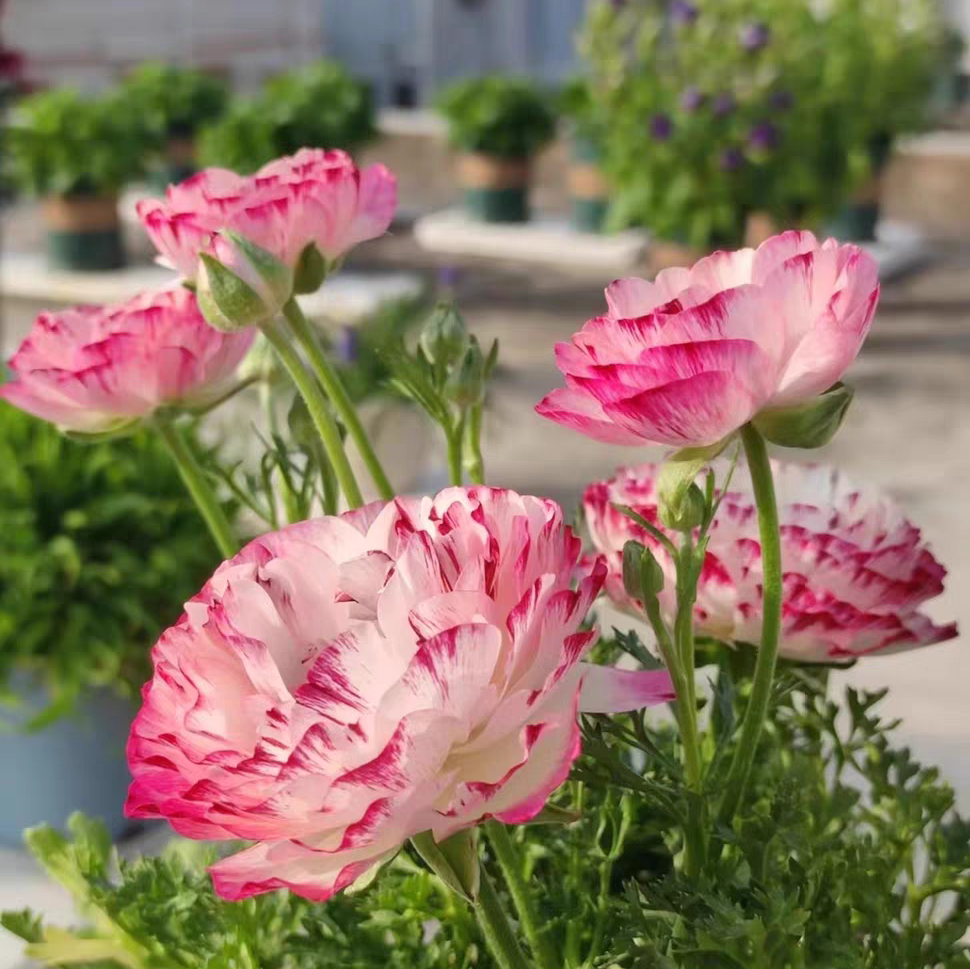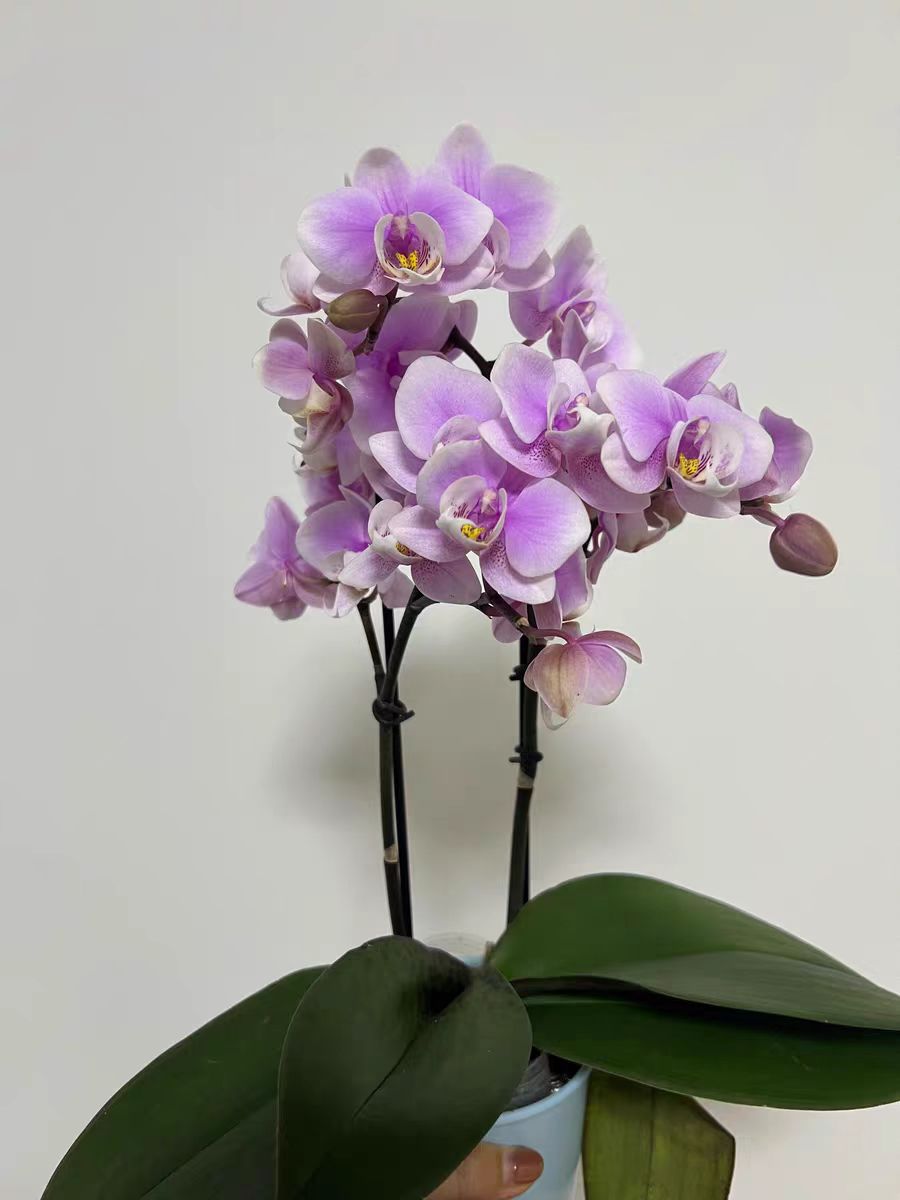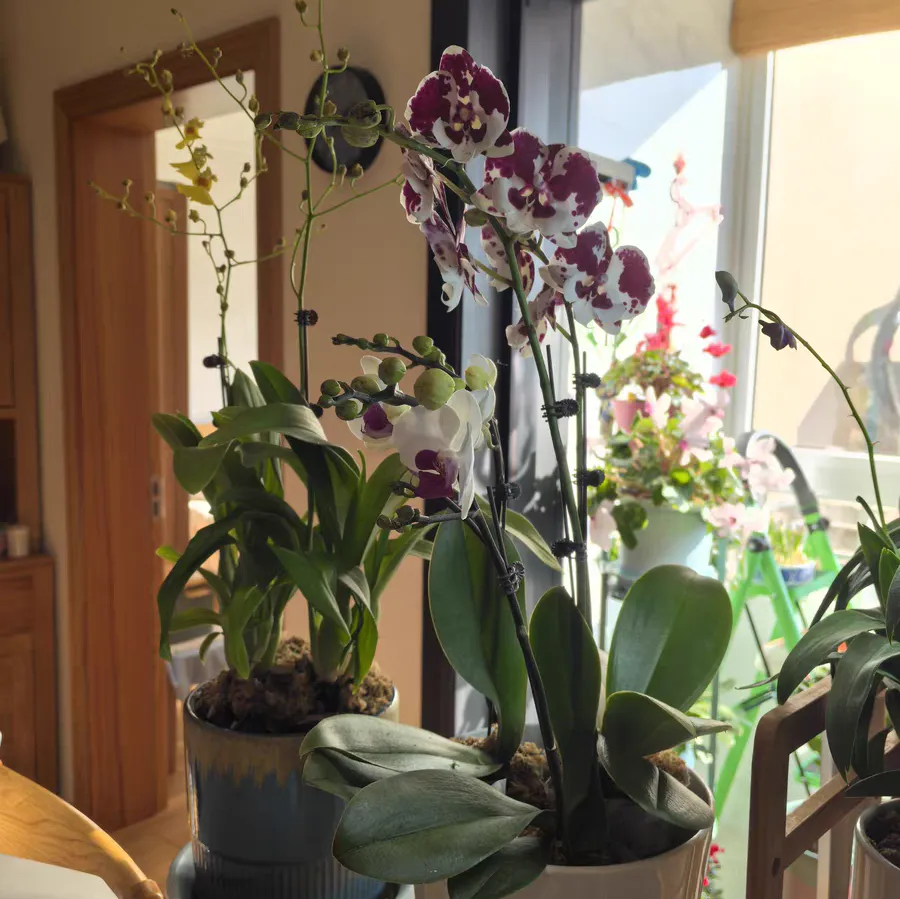Ranunculus asiaticus, with the scientific name of Ranunculus asiaticus L., has plump flowers that resemble peonies. The petals are layered one upon another, with a soft texture and rich colors including white, pink, yellow, and red. The plant is relatively short, usually 20 to 40 centimeters high. It prefers a cool climate and is suitable for growing in a semi - shady environment. The flowering period is mostly in spring.
Ranunculus asiaticus not only has ornamental value but also certain medicinal value. Its roots can be used as medicine and have the effects of clearing heat and detoxifying, reducing swelling and relieving pain.
Ranunculus asiaticus is usually sown in autumn. Select loose, fertile, and well - drained soil, evenly spread the seeds on the soil surface, cover them with a thin layer of soil, and then thoroughly water. Place them in a cool and ventilated place and wait for germination.
When maintaining Ranunculus asiaticus, the following points need to be noted. First, choose loose, fertile, and well - drained soil. Second, provide an appropriate amount of water for Ranunculus asiaticus, but do not over - water to avoid root rot. In addition, Ranunculus asiaticus likes sufficient scattered light but should not be directly exposed to the sun. After the flowering period, timely prune the withered flowers and dead leaves to keep the plant clean and beautiful.
Sometimes people confuse Eustoma grandiflorum with Ranunculus asiaticus, but in fact, there are many differences between them.
In terms of appearance, most of the flowers of Ranunculus asiaticus are double - petaled. The flower shape is full and round, and the petals are clustered layer by layer, like delicate small peonies. The texture is like gauze, soft, and shiny, and the flower colors are rich and gorgeous. The petals of Eustoma grandiflorum can be single - petaled or double - petaled. The overall flower shape is trumpet - shaped or cup - shaped. The petals are relatively thin and do not have as many layers as those of Ranunculus asiaticus. The colors are mostly in elegant tones.
In terms of the flowering period, Ranunculus asiaticus usually blooms in spring, and the flowering period is about 1 - 2 weeks, which is relatively short. The flowering period of Eustoma grandiflorum is long, and it can bloom from spring to autumn, with an ornamental period of up to several months.
In terms of growth habits, Ranunculus asiaticus prefers a cool environment and has good cold - tolerance, but poor heat - tolerance. It is suitable for being planted in loose and fertile soil. Eustoma grandiflorum loves warm and humid conditions, has good heat - tolerance, and has a wide adaptability to soil. However, well - drained and fertile soil is beneficial to its growth.
In terms of uses, Ranunculus asiaticus is mainly used as cut flowers to make beautiful bouquets and decorate floral works, and it can also be potted. Eustoma grandiflorum has a wider range of uses. Besides being used as cut flowers and potted plants, it is also often used for arranging flower beds and flower borders, creating an elegant landscape atmosphere.
In conclusion, the flowers of Ranunculus asiaticus are like peonies, the plants are short, and they like cool and semi - shady environments. The flower shape of Eustoma grandiflorum is funnel - shaped, the plants are relatively tall, and they have strong adaptability.
Differences between Ranunculus asiaticus and Eustoma grandiflorum

Share with
Tagged in :




Leave a Reply